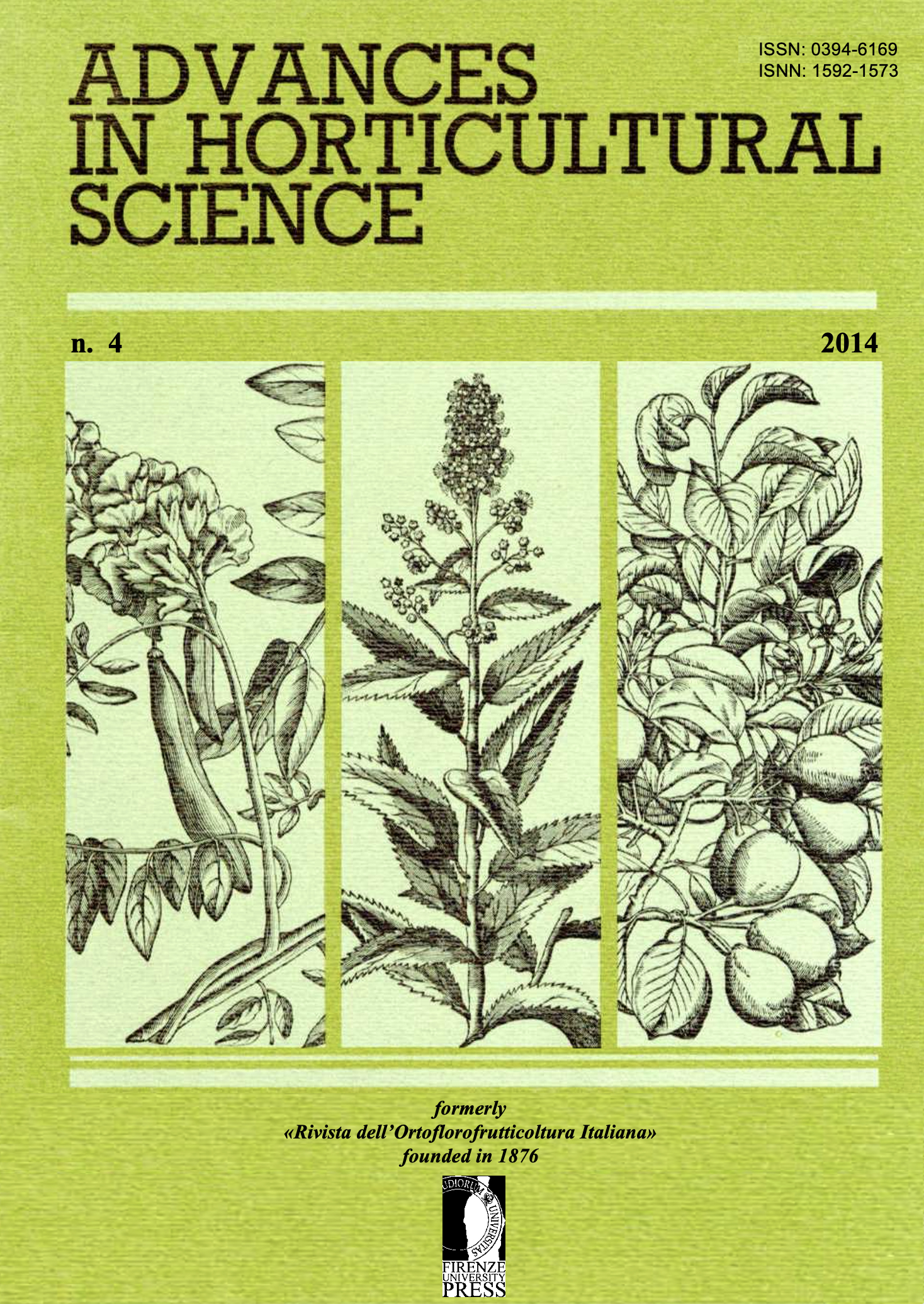Effects of wound treatments to flower organs on fruit set, development, and quality in sweet cherry (Prunus avium L.)
Published 2014-12-31
Keywords
- Anthocyanin concentration,
- artificial removal,
- cultivar difference,
- physical damage
How to Cite
Copyright (c) 2014 M. Yuki, D. Matsumoto, K. Ikeda, S. Taira

This work is licensed under a Creative Commons Attribution 4.0 International License.
Abstract
Flower organs are important elements for pollination and fruit production. Although several studies on fruit trees have shown that damage to certain flower organs affects the resultant fruit, the influences of damage to flower organs on fruit production are largely unknown for most fruit trees. Sweet cherry is one of the most commercially important fruit trees, the tender flowers of which are occasionally damaged by factors such as insects, diseases, and weather disasters. In this study, the flower organs of two different Japanese sweet cherry cultivars, ‘Satohnishiki’ and ‘Benishuho,’ were wounded at flowering time by petal removal, stamen removal, sepal removal, or peduncle wounding, and the effects on fruit set, development, and quality at harvest were examined. All wound types slightly increased the fruit drop in ‘Satohnishiki,’ whereas fruit drop in ‘Benishuho’ was promoted by petal removal and peduncle wounding, and was suppressed by sepal removal. The fruits resulting from the wounded flowers developed in a similar manner to those of control flowers in both cultivars. Fruit weight, total soluble solid concentration, and titratable acidity of the flesh juice were not affected. On the other hand, the anthocyanin concentration in fruit skins was differentially affected depending on the cultivar, increasing in ‘Satohnishiki’ fruits but decreasing in ‘Benishuho’ fruits.
References
- ARAKAWA O., 1990 - Ethylene production in apple fruit. - Agric. Hortic. (Nogyo-oyobi-Engei), 65: 363-366.
- FARGER D., CHALMERS D.J., 1997 - Regulation of anthocyanin synthesis in apple skin (III). Involvement of phenylalanine ammonia-lyase. - Aust. J. Plant Physiol., 4: 133-141. DOI: https://doi.org/10.1071/PP9770133
- FUKAI N., 1995 - Cherry. Fruit set, appropriate setting, pp. 63-87. - In: FUKAI N. (ed.) Cultivation techniques in sweet cherry and pear production. - Yokendo, Tokyo, Japan.
- HEDHLY A., HORMAZA J.I., HERRERO M., 2009 - Flower emasculation accelerates ovule degeneration and reduces fruit set in sweet cherry. - Sci. Hortic., 119: 455-457. DOI: https://doi.org/10.1016/j.scienta.2008.08.020
- KATAOKA I., KUBO Y., SUGIURA A., TOMANA T., 1983 - Changing in L-phenylalanine ammonia-lyase activity and anthocyanin synthesis during berry ripening of three grape cultivars. - J. Japan. Soc. Hortic. Sci., 52: 273-279. DOI: https://doi.org/10.2503/jjshs.52.273
- KITAHARA Y., OGASAWARA C., TAIRA S., 2013 - Effect of cutting of calyx lobes and shading of immature fruit on fruit development and quality in apple and persimmon. - Hort. Res. (Japan), 12: 475.
- NAKAMURA M., 1967 - Physiological and ecological studies on the calyx of the Japanese persimmon. - Res. Bull. Fac. Fac. Agric. Gifu Univ., 23: 1-62.
- PROCTOR M., YEO P., 1973 - Insect-pollinated flowers-I, pp. 45. - In: HUXLEY S.J., J. GOLMOUR, M. DAVIES, and K. MALLANBY (eds.) The pollination of flowers. Collons, London, UK.
- TAKAHASHI K., ARASAWA N., 2001 - Difference of fruit drop pattern in sweet cherry cultivars. - Hort. Res. (Japan), 70: 229.
- VEMMOS S.N., GOLDWIN G.K., 1994 - The photosynthetic activity of Cox’s Orange Pippin apple flowers in relation to fruit setting. - Ann. Bot., 73: 385-391. DOI: https://doi.org/10.1006/anbo.1994.1048
- WESTWOOD M.N., 1978 - Temperate-zone pomology, pp. 203-208. - W.H. Freeman and Company, New York, USA.
- YONEMORI K., ITAI A., NAKANO R., SUGIURA A., 1996 - Role of calyx lobes in gas exchange and development of persimmon fruit. - J. Amer. Soc. Hort. Sci., 121: 676-679. DOI: https://doi.org/10.21273/JASHS.121.4.676





